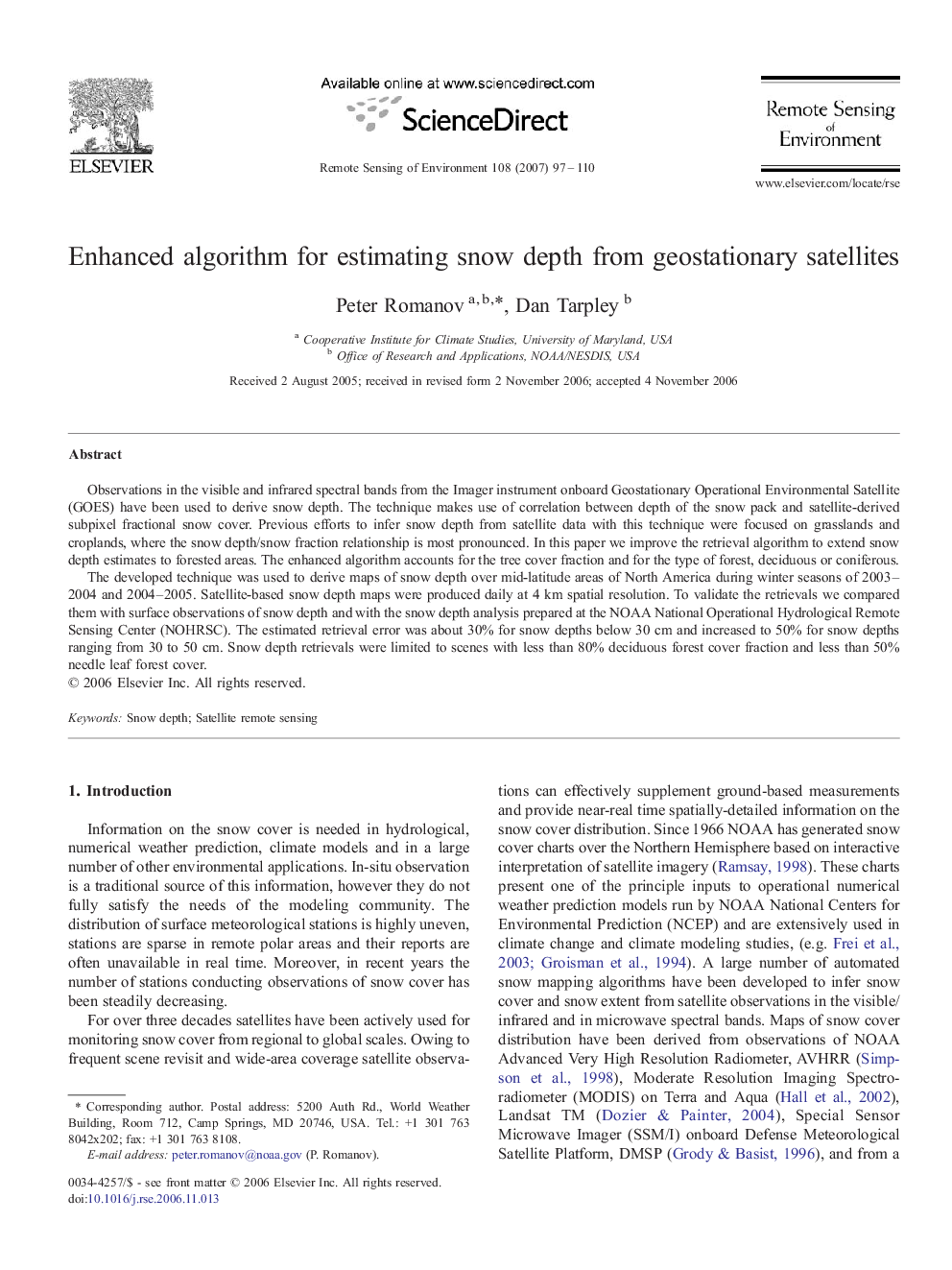| Article ID | Journal | Published Year | Pages | File Type |
|---|---|---|---|---|
| 4460894 | Remote Sensing of Environment | 2007 | 14 Pages |
Observations in the visible and infrared spectral bands from the Imager instrument onboard Geostationary Operational Environmental Satellite (GOES) have been used to derive snow depth. The technique makes use of correlation between depth of the snow pack and satellite-derived subpixel fractional snow cover. Previous efforts to infer snow depth from satellite data with this technique were focused on grasslands and croplands, where the snow depth/snow fraction relationship is most pronounced. In this paper we improve the retrieval algorithm to extend snow depth estimates to forested areas. The enhanced algorithm accounts for the tree cover fraction and for the type of forest, deciduous or coniferous.The developed technique was used to derive maps of snow depth over mid-latitude areas of North America during winter seasons of 2003–2004 and 2004–2005. Satellite-based snow depth maps were produced daily at 4 km spatial resolution. To validate the retrievals we compared them with surface observations of snow depth and with the snow depth analysis prepared at the NOAA National Operational Hydrological Remote Sensing Center (NOHRSC). The estimated retrieval error was about 30% for snow depths below 30 cm and increased to 50% for snow depths ranging from 30 to 50 cm. Snow depth retrievals were limited to scenes with less than 80% deciduous forest cover fraction and less than 50% needle leaf forest cover.
